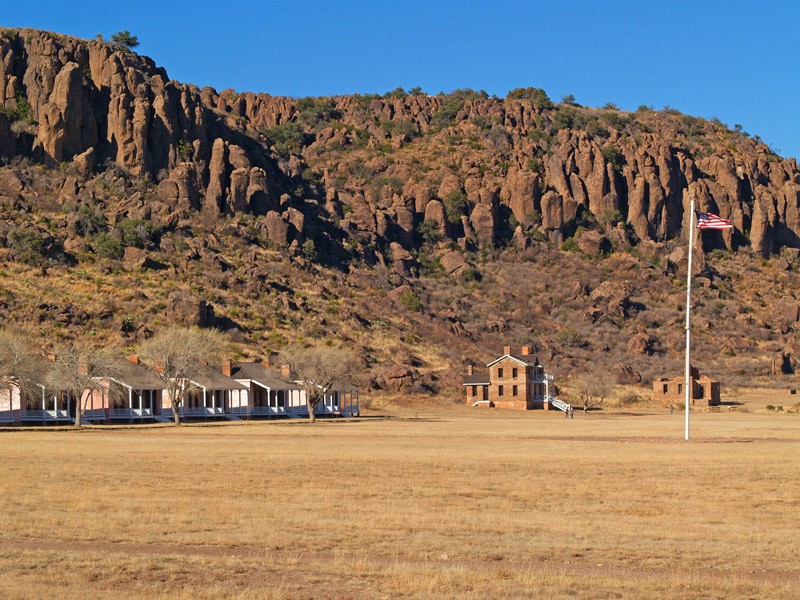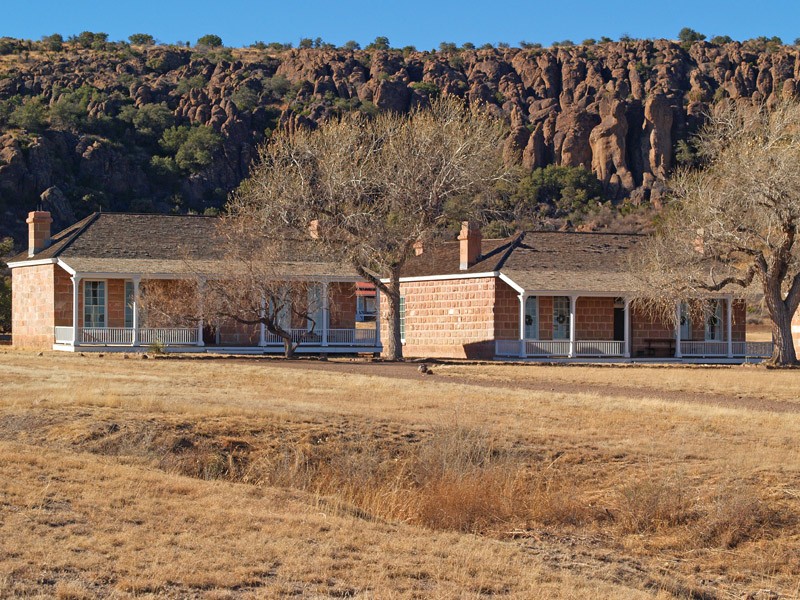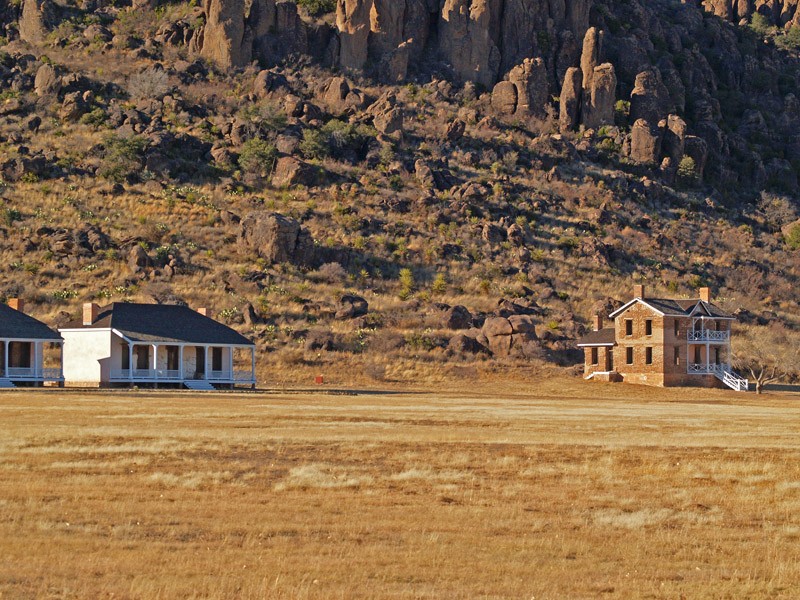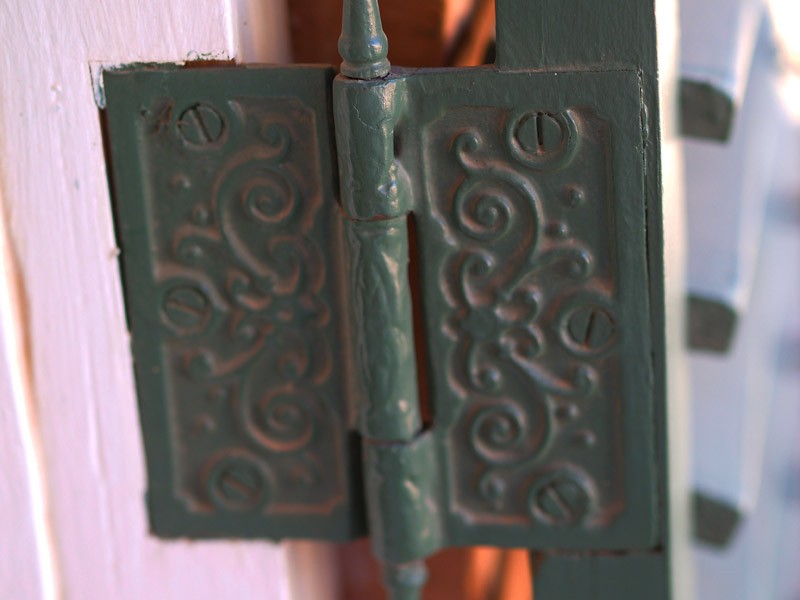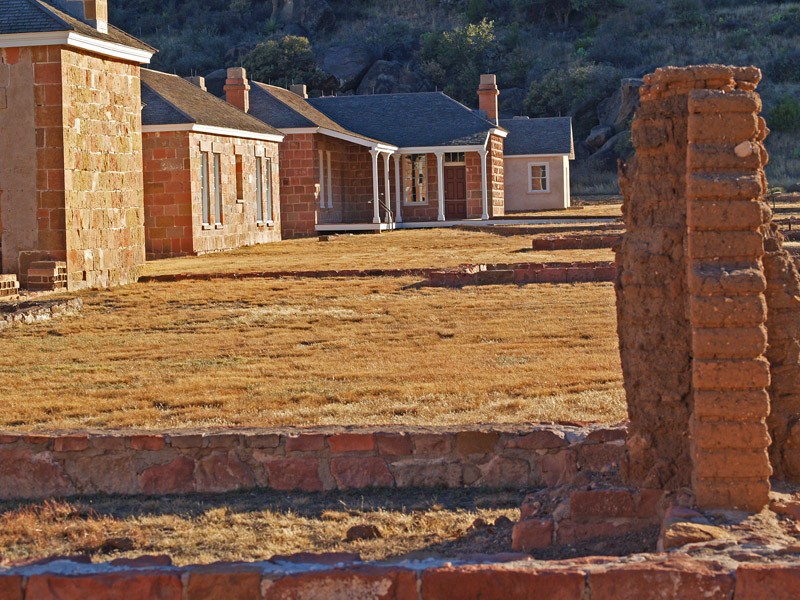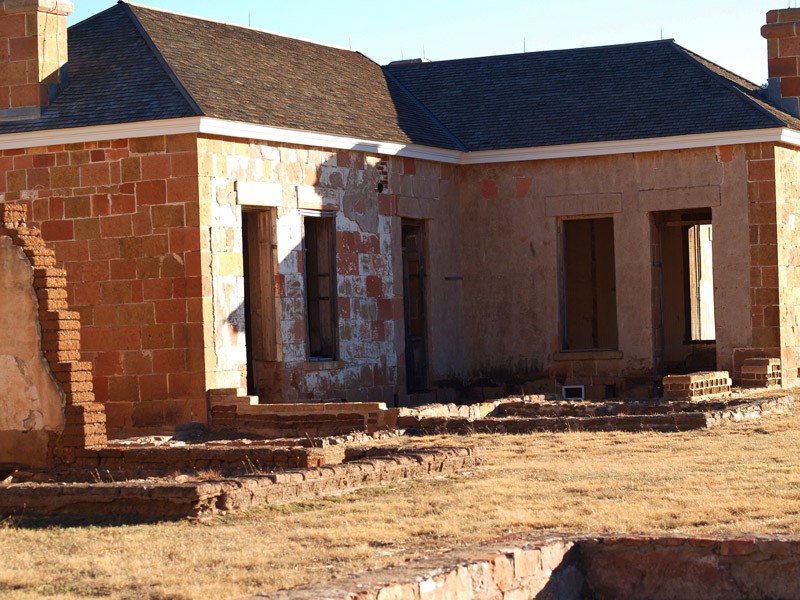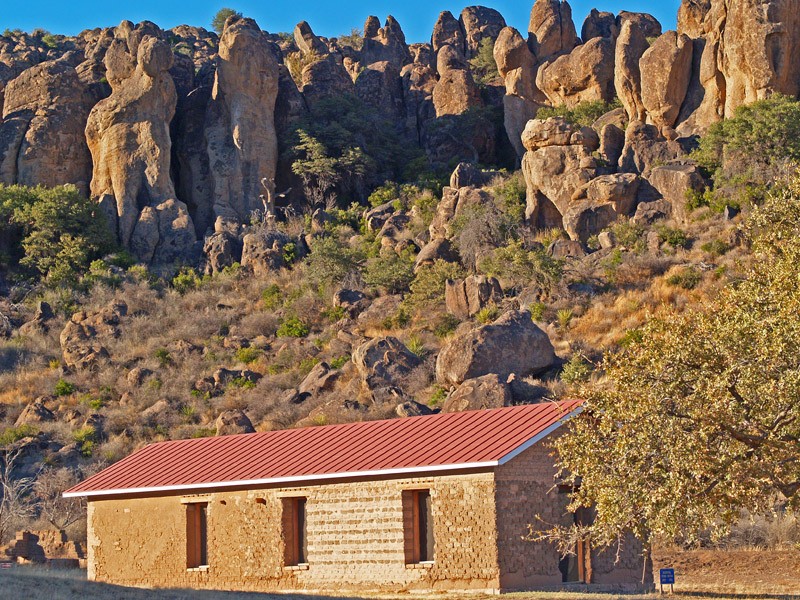A VISIT TO FORT DAVIS NATIONAL HISTORIC SITE
A Fascinating Slice of American History in West Texas
By Eva Eldridge
 John Heiner – Chief of Interpretation, and travel writer Eva Eldridge, discuss Fort Davis National Historic Site in West Texas, one of the best surviving examples of an Indian Wars’ frontier military post in the Southwest, on Big Blend Radio.
John Heiner – Chief of Interpretation, and travel writer Eva Eldridge, discuss Fort Davis National Historic Site in West Texas, one of the best surviving examples of an Indian Wars’ frontier military post in the Southwest, on Big Blend Radio.
We arrived at the Fort Davis National Historic site one afternoon in late December. We came ready to experience the history of this site, but were surprised by the natural beauty of the area. Fort Davis spreads out below dark cliffs, which form a box canyon in the beautiful Davis Mountains. Limpia Creek, bordered by trees, meanders through the canyon. The history of Fort Davis is as fascinating as the area in which it all played out.
By 1854, the California gold rush was winding down, but that didn’t stop the influx of people making their way across Texas to find their fortunes. The southernmost route to California included a 600 mile stretch between San Antonio and El Paso. As traffic increased on the trail, the Comanche, Kiowa, and Apache raiders began to attack those encroaching on their territory. Fort Davis, named after U.S. Secretary of War Jefferson Davis, was created to protect travelers and settlers. During the early years, the San Antonio-El Paso Route also became a backbone for freight and the mail service to San Diego. At one point, camels were used in an attempt to find a shorter route between San Antonio and Fort Davis, but that effort wasn’t successful.
Lt. Col. Washington Seawell, the first commander of Fort Davis, envisioned permanent stone buildings in the large meadow below the box canyon. However, the first incarnation of the fort was located in the canyon and consisted of rough, poorly built barracks made with green wooden slabs. The only stone buildings were for the forge, a warehouse, and bake house. The enlisted men of the 8th Infantry lived for several years in the flimsy barracks that couldn’t keep out the snow. It was after the Civil War before Fort Davis had a permanent location.
The fort remained active until 1861. When Texas seceded from the United States, Union troops left Fort Davis and the Confederates took over. Their stay wasn’t long. In 1862, the Union troops won through and flew the Union flag over Fort Davis once again. A few months later, the Union abandoned the fort and it took five years for the 9th U.S. Calvary to return and bring Fort Davis back to life.
The 9th U.S. Calvary consisted of the Buffalo Soldiers and their white officers. They occupied Fort Davis for the next few years, turning the establishment into a permanent camp with block barracks, officers quarters, and a hospital. The Buffalo Soldiers fought the Apache and other tribes during their time at the fort, and did their part in settling west Texas and other places like Arizona, Colorado, and New Mexico. The first black man to graduate from West Point, Henry Ossian Flipper, served as quartermaster at Fort Davis. Unfortunately, racism was active in 1881 and 2nd Lieutenant Flipper was blamed for missing money and drummed out of the Army. There was more to Flipper’s life after the army and finally, in 1999, he was granted a pardon by President Bill Clinton.
One of the things you didn’t want to do if you lived at Fort Davis was get sick or be wounded. Sanitation was mostly non-existent and people didn’t always die from their wounds as much as from infection. The old hospital building is partially restored, and samples of their operating instruments and other informative signs relay how tough life was more than a century ago. Families were wiped out from disease when there was no way to combat its spread.
Fort Davis wasn’t a stockade. There wasn’t a protective wall of any sort around it because the fort was never attacked. The Indians raided the cattle herds and travelers, but never the fort. In its heyday, more than 600 people lived in Fort Davis, but once the danger of Indian attack was eliminated, the fort was abandoned in 1891. Now we can visit restored parts of the fort and imagine the lives of the men and woman that lived there during the shaping of the west.
You can read more about Fort Davis here at www.NPS.gov/foda or even better, visit Fort Davis and see this little slice of American history, for yourself.
Eva Eldridge is a contributing writer for Big Blend Radio & TV Magazine and Parks & Travel Magazine. Along with travel and lifestyle articles, she also writes fiction and poetry. Visit her at www.EvaEldridge.com







